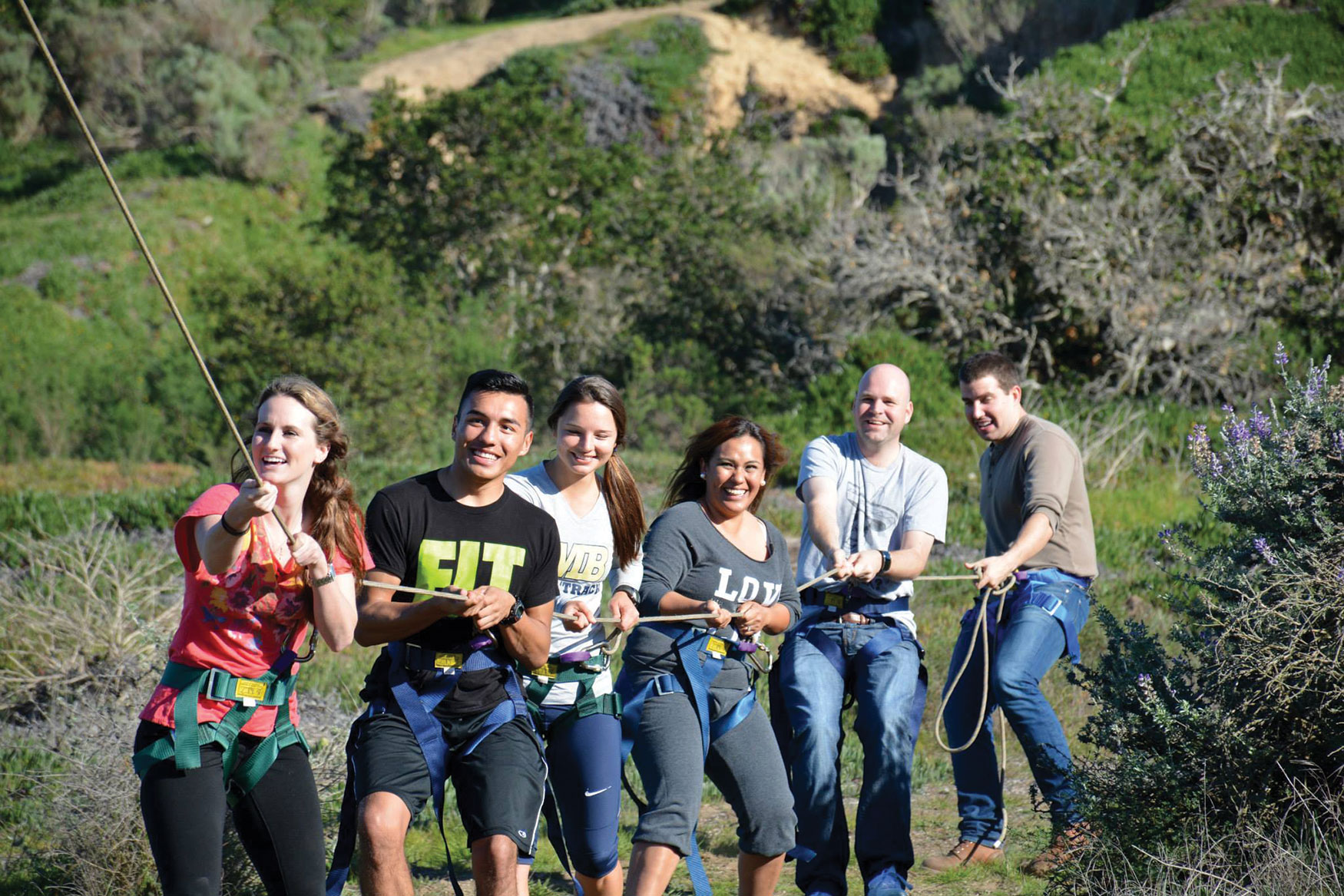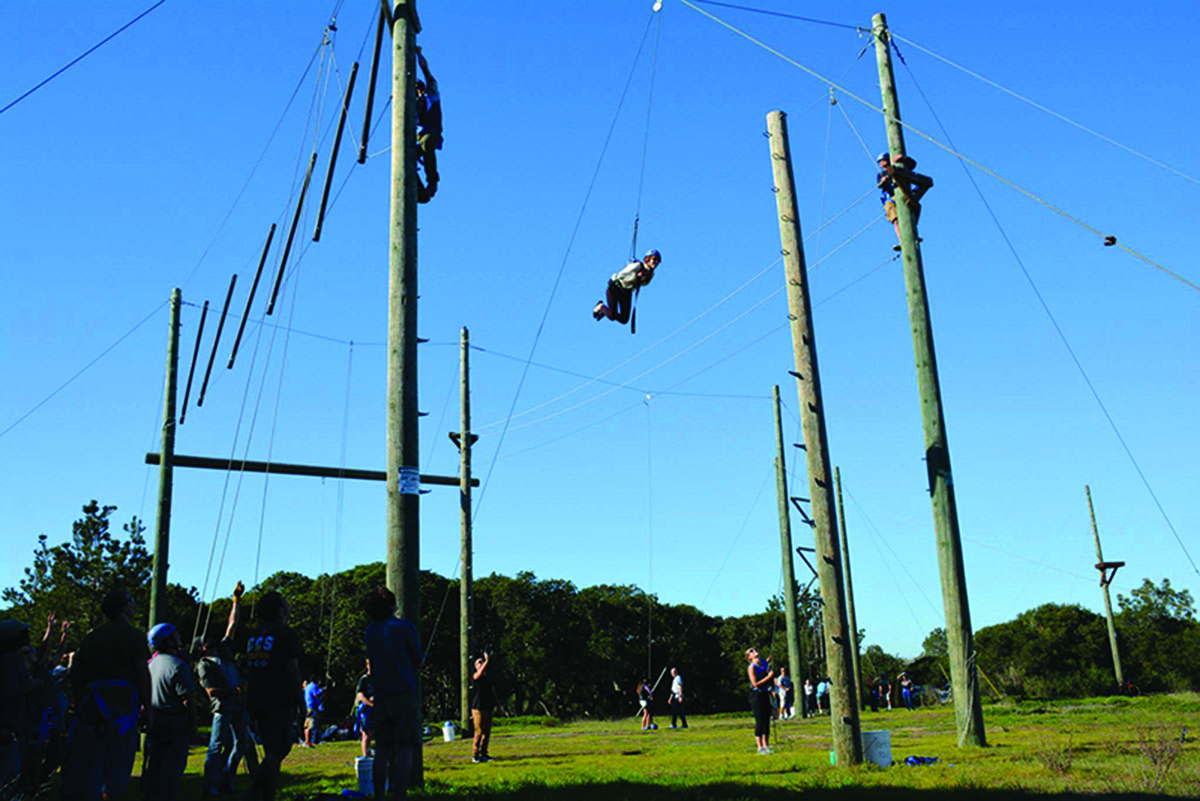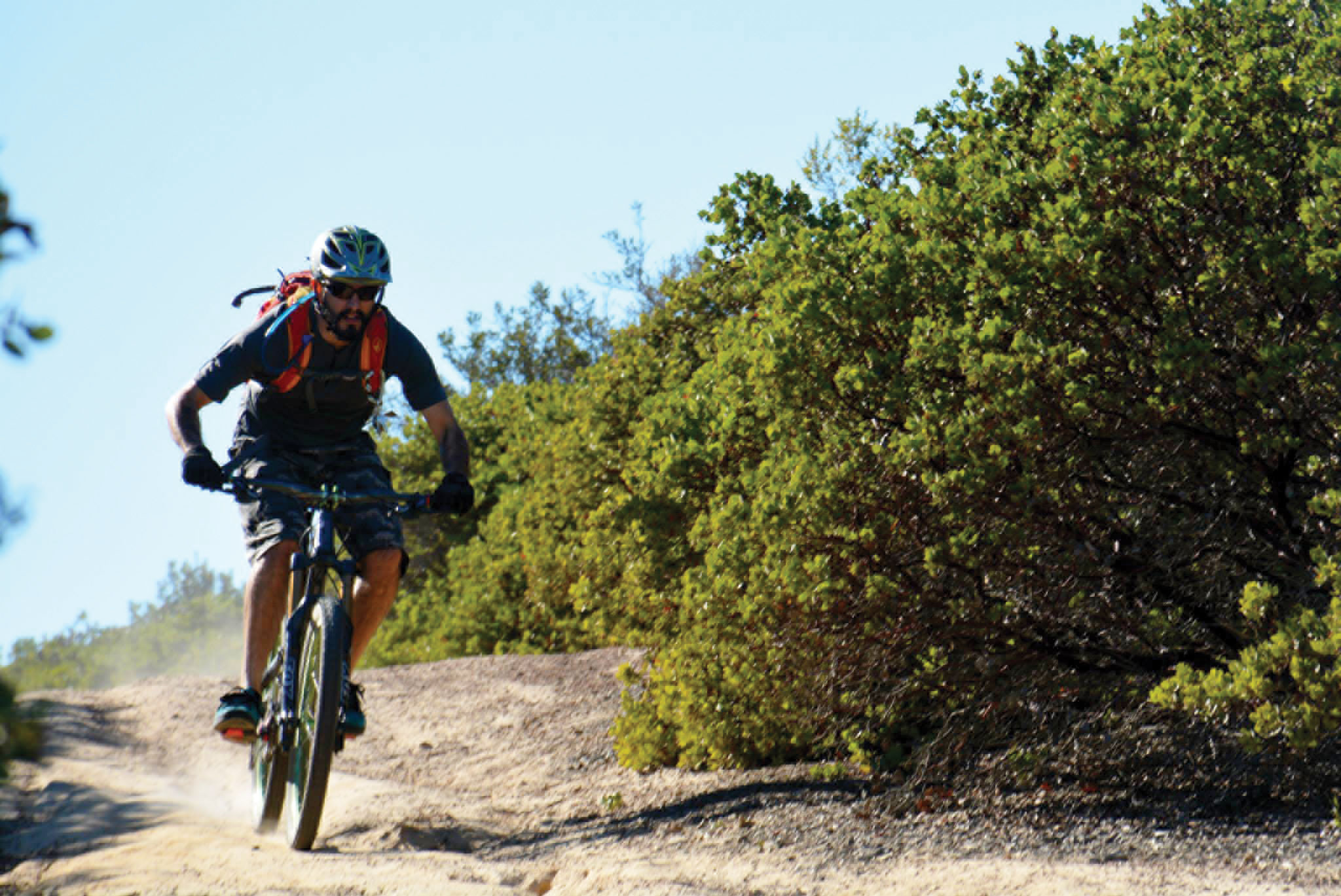CSUMB Magazine
Don't Let a Classroom Get in the Way of Your Education
Hundreds of students have discovered this through the Outdoor Recreation program at Cal State Monterey Bay. From hiking the forests of Big Sur, climbing up sheer rock for hundreds of feet at the Pinnacles, flying down a trail on a mountain bike at Fort Ord, or sleeping under a majestic canopy of stars in the Sierra Nevada, students have experiences often described as life-changing. Friendships forged during these adventures can last a lifetime.
None of this is surprising to Rick Dawson, associate director of Leadership Development & Student Recreation. It’s more than being a “week-end warrior” or getting exercise and sun. “Students gain invaluable skills they will use beyond college, including time management, developing relationships and relieving stress in healthy ways,” he said.
The Outdoor Recreation Program served 800 to 1,000 students last year and employs nearly 35 volunteers and staff. It operates under the broad umbrella of Student Recreation, which includes intramural sports and the sports clubs. It was founded in 2011 under Dawson’s leadership.

Since then, the Outdoor Recreation Program has grown rapidly and exploded in popularity. Camping trips to Yosemite, Malibu and the Pinnacles are scheduled each semester. Trips that feature day hikes, rock climbing, kayaking and stand-up paddle boarding are local and affordable, ranging from $20 to $30 per outing. Skiing and snowboarding in the Sierra Nevada are also offered. Costs typically include transportation, food and gear. First-time participation is strongly encouraged.
Freshmen are particularly encouraged to participate, since the program strongly focuses on multicultural awareness and leadership skills. Matt Salyer (GS ’14) discovered the program as a student and after graduation became a full-time staff member. One key component, Salyer said, is the Outdoor Leadership Program (OLP) which combines leadership development, outdoor skills training and mentoring.
“Students in the OLP come from different backgrounds and all walks of life. Some grew up in the city and never pitched a tent. Others grew up camping,” Salyer said. “Regardless, it’s amazing how everyone comes together on a trip.”
Personal development can happen in the woods, miles from civilization, with the rain coming down hard as you set up tents for the first time with fellow students. The hike was amazing and lasted for miles. But now it’s over. You’re all exhausted. You’re all hungry. The mud clings to boots and knees as everyone takes turns kneeling and pounding stakes in the ground, securing each tent. Poles are assembled quickly in the downpour. Everyone at last finds shelter. That’s the kind of teamwork which breaks down social barriers, Salyer said. Bringing that together is a critical learning experience for participants in the program.
The OLP also focuses on environmental stewardship. One popular trip, which is free to students, is the Ventana Wilderness Project. OLP participants spend the day doing trail restoration in Big Sur.

It is a transformative experience for many students who are first-generation or come from major metropolitan areas, said Carlos Espinoza (CSIT ’15). “They can be all over the place, personally, academically, and then become grounded in many ways,” Espinoza said. “We’ve had students thank us with tears in their eyes after sitting by the first campfire they built themselves, or sleeping in the wilderness for the first time. Many feel vested in the program and it gives them a ‘home’ during their college years. It did for me.”
Espinoza, like Salyer, discovered the program as a student and is now on staff. Along with the trips, Salyer coordinates the Challenge Course on campus. Espinoza coordinates the Otter Cycle Center in the CSUMB Student Center. Both are integral parts of the Outdoor Recreation Program.
According to Salyer, teamwork activities learned on the trips and the Challenge Course can complement each other. The course itself consists of ropes, planks and rock climbing equipment, elevated by large wooden poles, resembling telephone poles, secured firmly into the ground. Participants, overcoming natural fears and using teammates as spotters, traverse lines over large swaths of empty space with the ground nearly 100 feet below at the highest points.

Think of walking on a rope between the tops of two seven-story buildings. You are secured by a safety line. However, the psychological impact of having ground that far below, with nothing but a rope to stand on, can be intense. You slowly make progress at the encouragement and guidance of teammates. Group cooperation tends to improve very quickly, Salyer said. Individuals learn to expand their comfort zones.
Of course, other participants may want to keep things a little more down-to-earth. The Challenge Course allows participants to start activities three feet off the ground. Higher elevations can be achieved in time. Other activities on the Challenge Course cater to individual experiences.
If two wheels on solid ground are more appealing, the Otter Cycle Center is conveniently located in the Student Center. The center is a complete bicycle repair and rental shop. A student can rent a bike for $10 a day, with rentals also available by the weekend, week, month or semester.

On Fridays, students can take a free mountain bike tour through the Fort Ord National Monument, adjacent to campus. Espinoza often leads these trips, which can go for miles on trails of open space. More advanced rides through difficult terrain are scheduled once a month. Students who bring a GoPro camera get some great YouTube videos.
All of the Outdoor Recreation Program activities – the trips to the wilderness, the Outdoor Leadership Program, the Challenge Course and the Otter Cycle Center – are critical to the core mission of CSUMB Student Recreation.
“We are committed to enriching the lives of the CSUMB community through multicultural awareness, physical fitness and cultivating a sense of belonging,” Dawson said. Future plans for the program include the development of international trips, a boating center and academic units for OLP students.
John Muir said, “The mountains are calling and I must go.” Thousands of CSUMB students have heard a call and will continue to do so. The Outdoor Recreation Program will be a gateway for years to come.